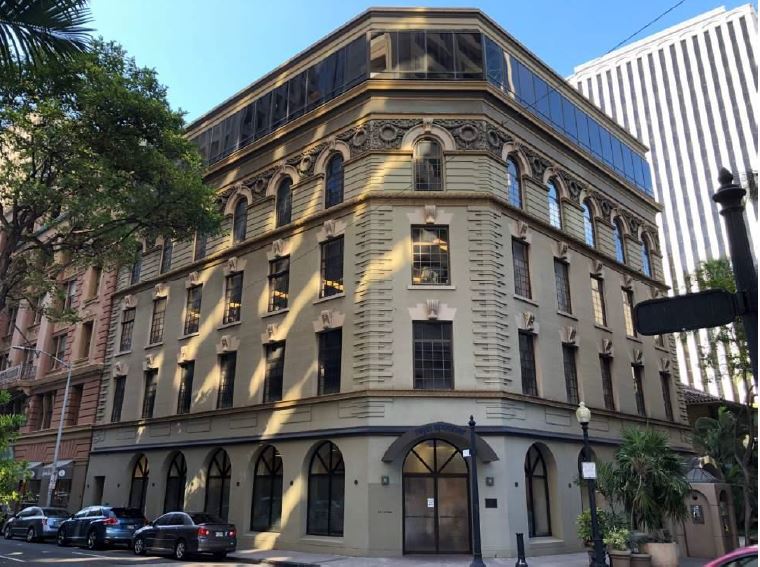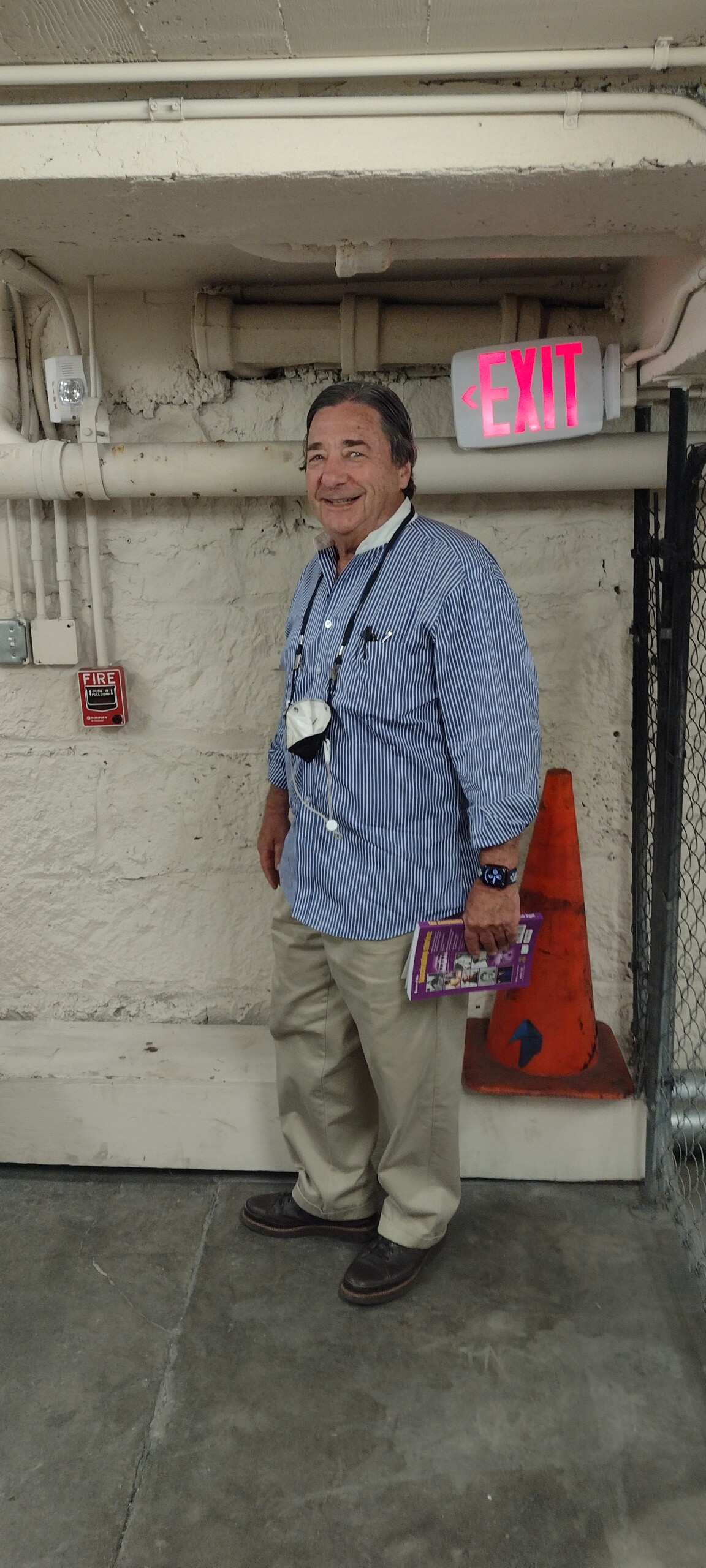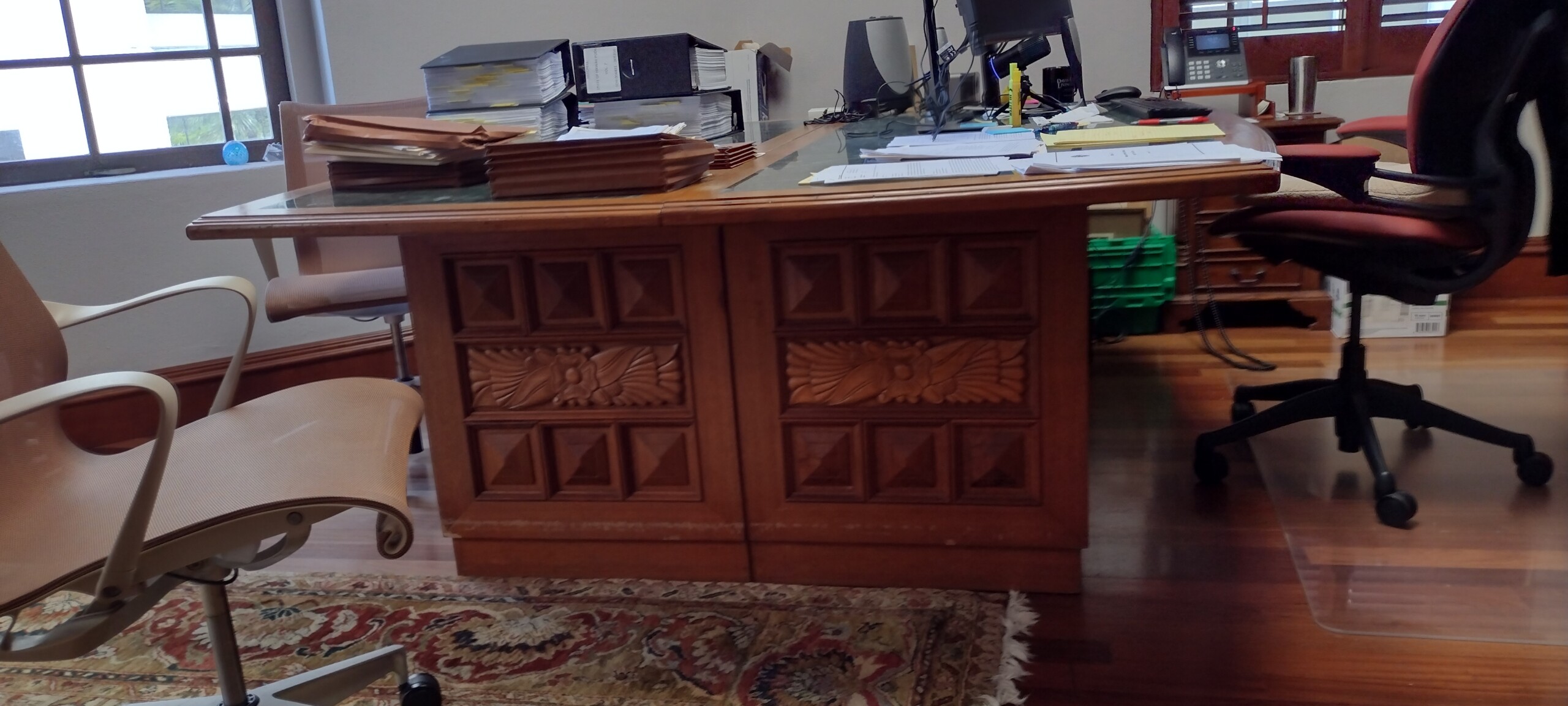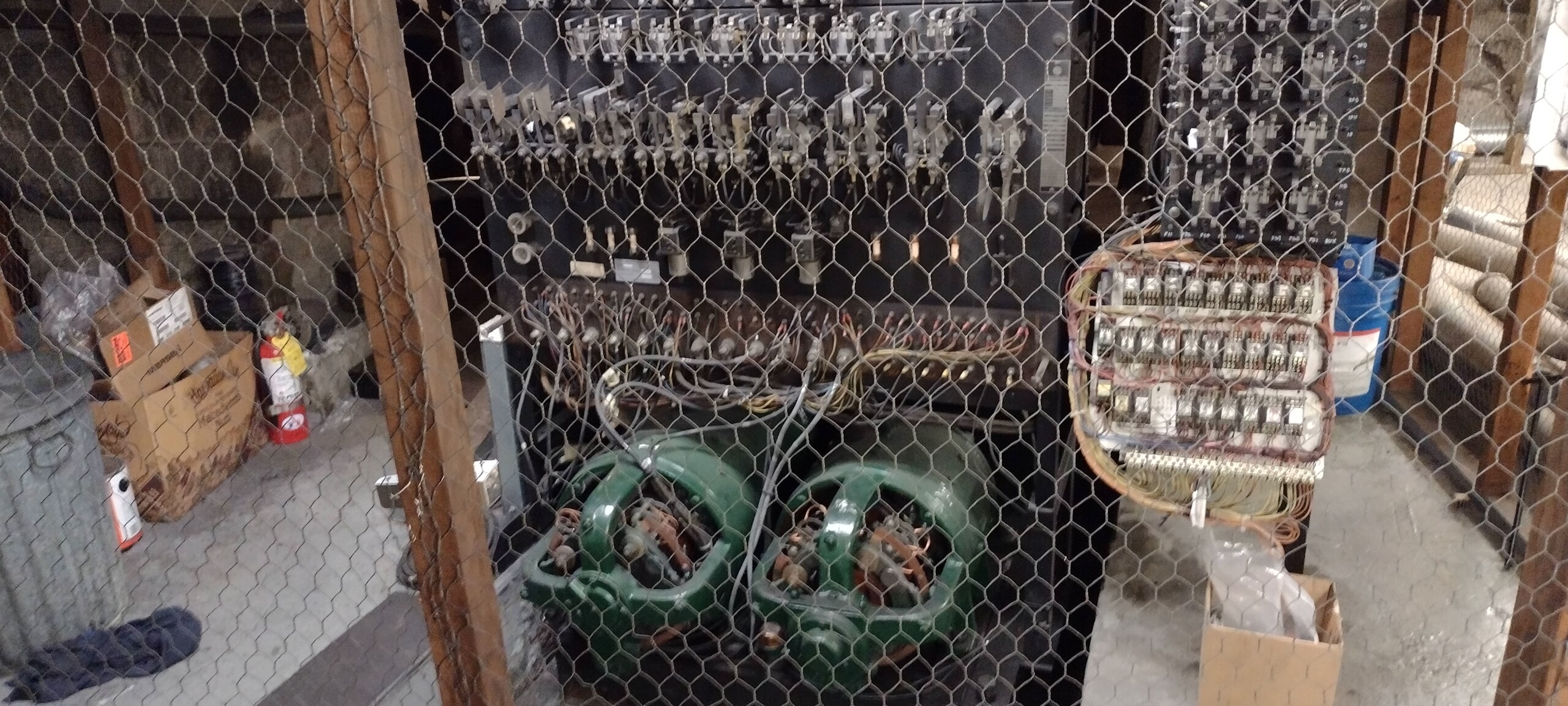
By Wendy Tolleson, MA
On May 25th, I toured the Judd Building at 851 Fort Street in downtown Honolulu with Columnist and Consultant Bob Sigall. The building is located on the corner of Fort and Merchant and was erected in 1898. The architect, Oliver Traphagen, also designed The Moana Surfrider around the same time. Bank of Hawai‘i, First Federal Savings, and Alexander & Baldwin have each occupied the building at some point in the past.
Mark Davis of the law firm Davis, Levin, Livingston and Grande was our host. The firm moved in in 2000 and occupies the fourth and fifth floors today. Davis’ office was, at one time, the Honolulu Stock Exchange, from 1898-1977. The original desk and six of the ornate chairs from that time (see below) are still in his offices.

Our tour guide, Mark Davis.
Mark was gracious and deeply knowledgeable about the building’s history. Although I already knew a little of the building’s history and learned more from the National Register of Historic Places nomination form, the tour Mark provided of the interior really delivered a view into the history of the past businesses that occupied the building that wasn’t included in the nomination.
The basement is an extraordinary space that includes architectural features and artifacts representing the former occupants. These included the two vaults used by the Bank of Hawai‘i and Alexander and Baldwin, a working dumb waiter, and the mechanical “guts” of the first electric elevator of its kind installed in Hawai‘i’s first “skyscraper”. One architectural element in the basement — cut basalt stone bases that supported the pillars of the building—is a material that was used in construction of buildings in Chinatown that are still extant such as the Podmore building on Alakea Street.
The tour of the different floors revealed architectural elements that were saved: the iron pattern frames of the front door, a sky light, the etched brass elevator doors, and the quirky elevator that decided what floor it would deposit you on regardless of your choice.
The chairs and the clerk’s desk from the Honolulu Stock Exchange that Mark serendipitously purchased at an auction nailed down the context for the stock exchange. Mark also used the koa that lined the interior offices where he could.
Unfortunately, the interior has been so heavily modified that I didn’t get a sense of place for the other businesses and their periods. But those kinds of things happen when you’re running a large business and need functional work space. It is admirable that a business, especially one that doesn’t own the building, invested heavily in preservation where it could. I received the impression from Mark that this was very personal to him. I wish there were more people and business owners like him.
- The chairs…
- …and clerk’s desk from the Honolulu Stock Exchange
- “Guts” of the first electric elevator.
The Judd Building is part of the Merchant Street Commercial & Civic Historic District. Learn more about the District.
Top image courtesy of MASON. All others courtesy of Wendy Tolleson.

Wendy Tolleson grew up on Ford Island and started working at age 16 as a musician. She holds two undergraduate degrees in history, business and economics, and an MA in archaeology and museum studies. Tolleson trained with the University of Pittsburgh’s Cultural Resources Management Program then crewed on archaeological projects in Pennsylvania, Arizona, New Mexico, Texas, Nevada and California before returning to Hawai‘i. Tolleson worked for Bishop Museum’s Applied Research Group and was the principal investigator and manager for the Guam office of IARII. She continued in cultural resources management after returning to Hawai‘i before switching to history in 2011. Tolleson is a former preservation professional with the Honolulu Authority for Rapid Transit [HART] where she worked concurrently as a researcher for the Historic Honokaʻa Town Project. She continues to work on the Historic Honokaʻa Town Project and for a Maui firm, while freelancing in land research and historic preservation.




